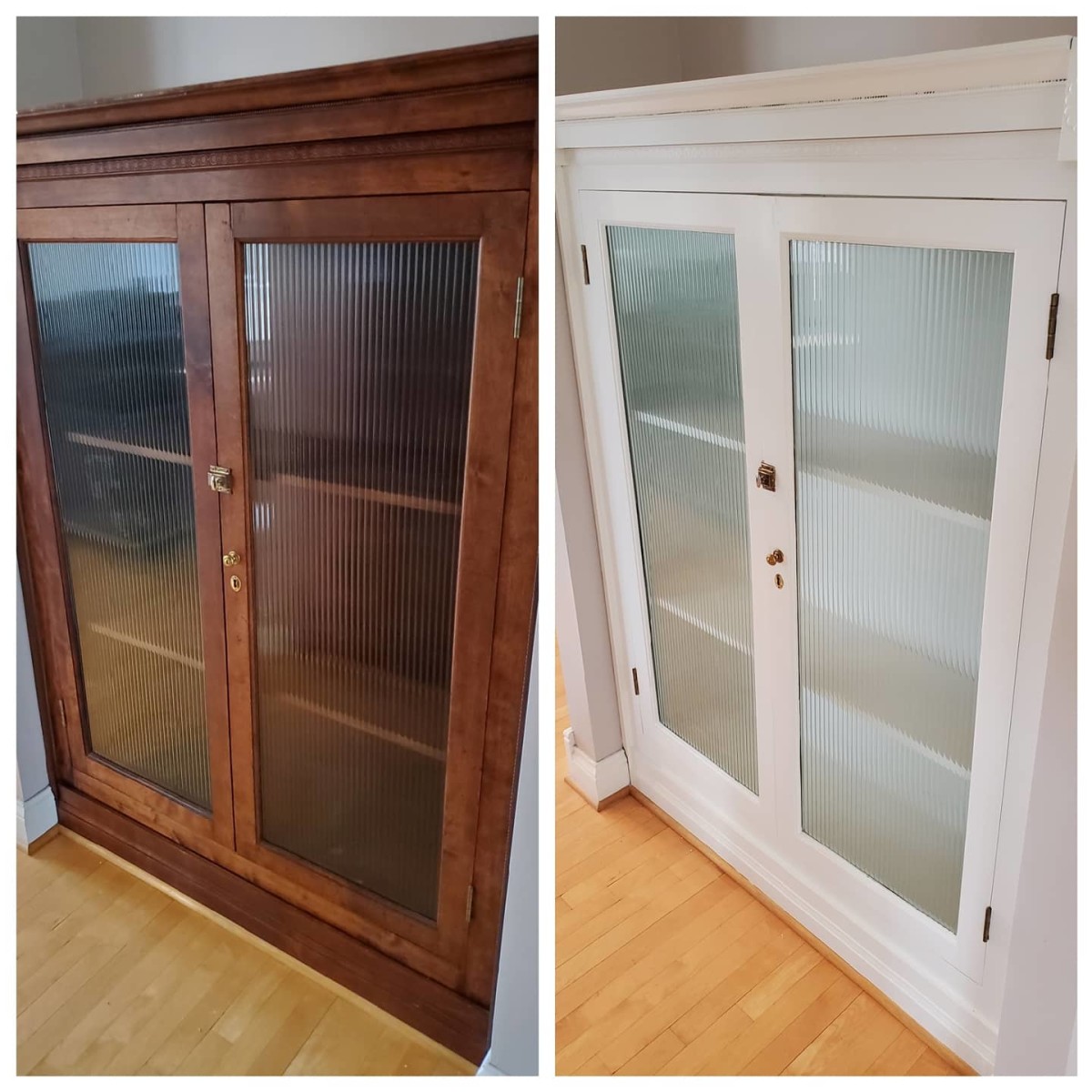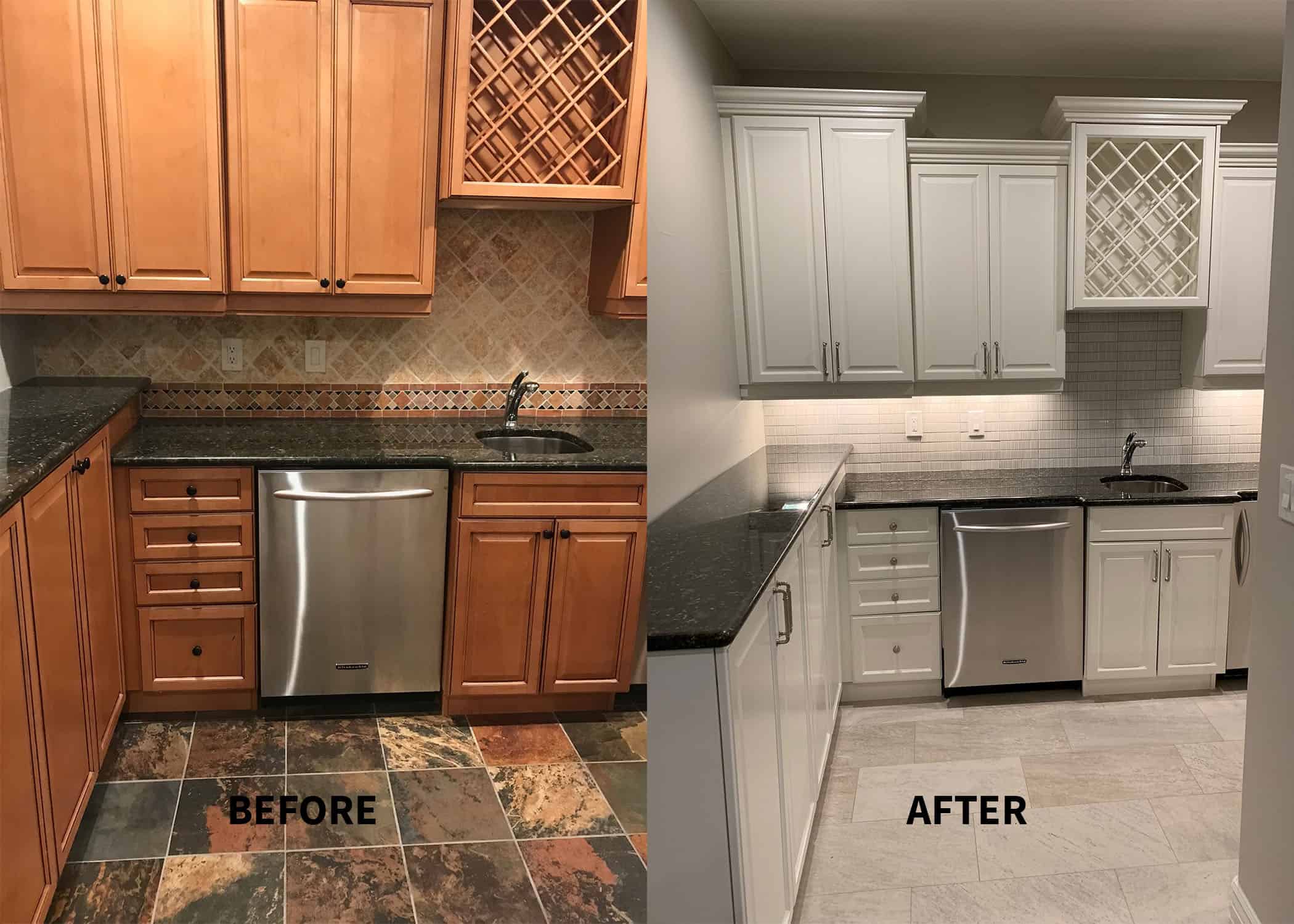The Art of Interior Cabinet Painting: Painting Inside Of Cabinets

Yo, painting the inside of your cabinets is a serious game, but it can totally transform your kitchen or bathroom. It’s all about making those spaces fresh and fly. Let’s dive into the art of painting cabinet interiors, from picking the right paint to getting that smooth, even finish.
Types of Paint for Cabinet Interiors
When it comes to paint, you gotta choose wisely for your cabinet interiors. Different types of paint have their own strengths, so knowing what’s up will help you make the right call.
- Acrylic Latex Paint: This is the OG of cabinet paint. It’s durable, dries fast, and cleans up easily with soap and water. It’s also low-VOC, which means it’s good for the environment and your health.
- Oil-Based Paint: This paint is known for its super-tough finish that’s resistant to scratches and stains. It also dries to a smooth, hard surface, which is ideal for high-traffic areas. However, it takes longer to dry and requires mineral spirits for cleanup.
- Epoxy Paint: If you’re dealing with a super-tough situation like a cabinet that’s always getting wet, epoxy paint is your best bet. This stuff is super durable and waterproof, making it perfect for bathrooms and kitchens. However, it can be tricky to work with, so it’s best left to the pros.
Preparing Cabinet Interiors for Painting
Before you start painting, you gotta prep those cabinets. This is where the real magic happens, making sure your paint job looks clean and professional.
- Cleaning: First things first, clean those cabinets. Use a degreaser or TSP (trisodium phosphate) to get rid of any grease, grime, or dirt.
- Sanding: After cleaning, give those cabinets a light sanding. This will help the paint adhere better and create a smooth surface. Use a fine-grit sandpaper (120-150 grit) and sand with the grain.
- Priming: Priming is like the foundation for your paint job. It helps the paint adhere better, prevents stains from bleeding through, and creates a uniform surface for a smooth finish. Choose a primer that’s compatible with your chosen paint.
Applying Paint to Cabinet Interiors
Alright, it’s time to paint! Follow these steps to get that smooth, even finish:
- Use a High-Quality Brush: Invest in a good-quality brush, preferably one made from natural bristles. It will make a world of difference in the quality of your finish.
- Thin Your Paint: Thinning your paint with a little bit of water or paint thinner (depending on the type of paint) will make it easier to apply and prevent brush strokes.
- Apply Thin Coats: It’s better to apply multiple thin coats than one thick coat. This will help prevent drips and runs and ensure a smooth, even finish.
- Use Long, Smooth Strokes: Apply the paint with long, smooth strokes in one direction. Avoid going back over already painted areas, as this can cause brush strokes.
- Let Each Coat Dry Completely: Before applying the next coat, let the previous coat dry completely. This will prevent the paint from becoming cloudy or uneven.
Creative Uses for Painted Cabinet Interiors

Beyond simply adding a pop of color, painting the insides of your cabinets can be a game-changer for organization and style. Think of it as a blank canvas waiting for your personal touch, allowing you to create a storage system that’s both functional and visually appealing.
Color-Coding and Labeling, Painting inside of cabinets
Color-coding and labeling can transform your cabinets into a well-organized system. Imagine a pantry where spices are neatly arranged by color, or a medicine cabinet where each item is clearly labeled for easy access.
- Color-Coding: Assign a color to each category of items. For example, red for snacks, blue for baking supplies, and green for cleaning products. This makes it easy to find what you need at a glance.
- Labeling: Use clear labels with bold lettering for each shelf or drawer. You can use pre-printed labels or create your own using a label maker or even masking tape and a marker.
Adding Visual Interest and Personality
Painting the insides of your cabinets can be an opportunity to add a touch of personality to your space.
- Color Schemes: Choose colors that complement the overall design of the room. For example, if you have a modern kitchen with white cabinets, you could paint the insides a bold color like teal or emerald green.
- Patterns: Geometric patterns, stripes, or even stencils can add visual interest to cabinet interiors. Consider painting the back of a bookshelf with a geometric pattern to create a unique backdrop for your books.
- Artistic Designs: For a truly unique look, consider adding artistic designs to your cabinet interiors. This could be anything from a simple floral pattern to a more elaborate mural.
Protecting Cabinet Interiors
Painting the insides of your cabinets can provide a protective barrier against damage and moisture.
- Protection from Damage: Paint can help to prevent scratches and scuffs on the inside of your cabinets. This is especially important in areas like pantries and bathrooms, where items may be stored in close proximity to each other.
- Moisture Resistance: Paint can create a moisture-resistant barrier, which is important in areas like bathrooms and kitchens. This can help to prevent mold and mildew growth.
Considerations for Painting Cabinet Interiors

Painting the inside of cabinets can add a touch of personality and style to your kitchen or bathroom. But before you dive in, it’s important to consider the potential challenges and how to overcome them.
Challenges Associated with Painting Cabinet Interiors
Painting the inside of cabinets can be tricky due to limited access, uneven surfaces, and the risk of spills. However, with careful planning and the right techniques, you can achieve a professional-looking finish.
Overcoming Challenges
- Limited Access: To reach the back corners of cabinets, you’ll need to use a small brush or a paint sprayer with an extension wand. For deep cabinets, you might need to remove the shelves or drawers to paint the entire surface.
- Uneven Surfaces: Before painting, thoroughly clean the surfaces with a degreaser and a damp cloth to remove any dust or grime. Sand down any rough spots to create a smooth surface for painting.
- Potential for Spills: To minimize spills, use a drop cloth to protect the floor and surrounding areas. You can also use painter’s tape to mask off any areas you don’t want to paint.
Choosing the Right Paint and Tools
The type of paint you choose will depend on the type of cabinet and the desired finish. For example, a durable enamel paint is a good choice for kitchen cabinets, while a latex paint is suitable for bathroom cabinets.
- Paint Type: Enamel paints offer a hard, durable finish that is resistant to moisture and stains, making them ideal for high-traffic areas like kitchens and bathrooms. Latex paints, on the other hand, are water-based, easy to clean up, and offer a good balance of durability and affordability.
- Tools: Depending on the size and shape of your cabinets, you can use a brush, roller, or spray gun. For small, intricate areas, a small brush is best. For larger surfaces, a roller or spray gun can save time and effort.
Painting inside of cabinets – Painting the inside of your cabinets can be a great way to add a touch of personality to your kitchen. While you’re sprucing up your space, you might also consider adding some festive cheer to your bedroom with some twinkling Christmas lights.
Check out this guide on ways to hang Christmas lights in your bedroom for some inspiration. Once you’ve finished decorating, you can return to your kitchen and enjoy the newly painted cabinets, adding a fresh look to your home.
Painting the inside of cabinets is a great way to refresh their look without a full makeover. If you’re considering a more substantial change, you might want to look into american classic kitchen cabinet doors to completely transform your kitchen’s style.
No matter which route you choose, remember to clean the cabinet interiors thoroughly before painting, ensuring a smooth and even finish.
